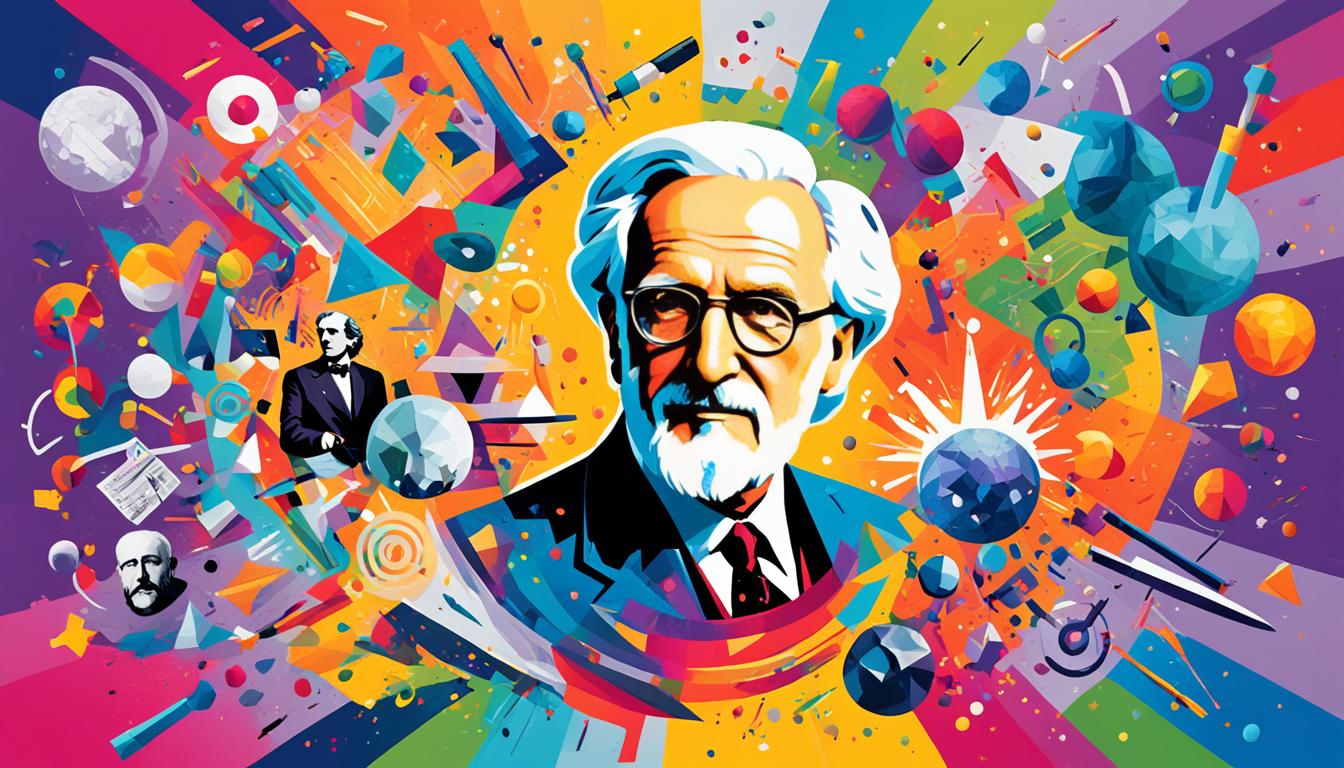Have you ever stood in front of a piece of art and felt the weight of its colors or the urgency of its lines tugging at your thoughts? The experience can be transformative, prompting profound questions about what art truly represents. This feeling is the heart of understanding formalism in art—an approach that goes beyond the narrative and dives into the very essence of artistic expression. By focusing on the visual elements, formalism invites you to appreciate art through sight and structure, allowing for a deeper engagement with each piece. In this exploration, we will unravel what is formalism art theory, its characteristics, and its significance in shaping not just art, but our perception of it.
Key Takeaways
- Formalism emerged in the early 20th century, centering on intrinsic qualities of artworks.
- The theory prioritizes visual elements over contextual or narrative factors.
- It emphasizes the autonomy of art, advocating for a focus on formal features.
- Critics argue formalism may neglect the social and historical contexts of art.
- Formalism has influenced numerous modern art movements like Cubism and Surrealism.
- Notable contributors include figures like Clive Bell and Roger Fry.
What is Formalism Art Theory
Understanding what is formalism art theory requires exploring its definition, origins, key contributors, and philosophical foundations. This critical approach focuses on the aesthetic qualities and the form of the artwork rather than its contextual influences. As a movement that gained traction in response to the Post-Impressionism era, formalism succeeded in reshaping the art landscape. This art theory definition emphasizes the importance of composition, color, line, and shape in determining a work’s artistic value. Key contributors to formalism include critic Clement Greenberg and artist Wassily Kandinsky, whose writings and artworks played a significant role in shaping the movement. The philosophical foundations of formalism are rooted in the belief that the intrinsic qualities of a work of art are what make it valuable, rather than its social or political context.
Definition and Origins
Formalism as a concept emerged in the late 19th century, aligning with the rise of abstraction in painting. It champions the idea that an artwork’s value lies in its formal elements such as color, line, shape, and texture. The philosophy of *l’art pour l‘art*, or “art for art’s sake,” influenced its founding principles, advocating for the intrinsic worth of art. Early figures within this theory argued for a focus on an artwork’s visual complexity rather than its societal or moral implications.
Key Contributors to Formalism
Several significant contributors helped shape the development and understanding of formalism. Notably, Roger Fry, Clive Bell, and Clement Greenberg provided critical insights that defined the theory. Fry introduced the term *”significant form,”* emphasizing the emotional impact of art through its formal properties. Greenberg, an influential mid-20th century critic, detailed formalism’s rigor, insisting that avant-garde art should explore expressive limitations, separating it from contextual realities and emphasizing its aesthetic qualities.
Philosophical Foundations
The philosophical foundations of formalism resonate with the belief that art should exist as an independent domain. This notion implicates a distancing from political and ethical discussions, reinforcing the idea that proper artwork analysis demands a separation from contextual considerations. Thinkers from Aristotle to Kant have shaped this perspective, guiding contemporary debates on formalism and its impact on art perception. Overall, these foundations underline the significance of engaging with the characteristics of formalist theory through a lens that prioritizes form over meaning.

| Key Elements | Description |
|---|---|
| Definition | Aesthetic qualities and form-based evaluation of art. |
| Origins | Late 19th century, influenced by Post-Impressionism. |
| Key Contributors | Roger Fry, Clive Bell, Clement Greenberg. |
| Philosophy | Art should be valued independently of context. |
| Influence | Reshaped art critique, shifting focus to aesthetic elements. |
Characteristics of Formalist Theory
Understanding the characteristics of formalism in art history involves examining certain foundational concepts that shape artistic evaluation. By focusing on the intrinsic qualities of art, you can appreciate how visual elements in art play a vital role in conveying meaning and emotion. Let’s explore three significant aspects of this theory: visual elements in art, the significant form concept, and the principles of medium specificity and flatness.
Visual Elements in Art
The exploration of visual elements in art is central to formal analysis in art. This perspective distinguishes basic components such as color, line, shape, and texture as essential for comprehending artworks. Focusing on these elements allows viewers to appreciate the interplay within the work, creating a cohesive visual experience free of contextual distractions.
Significant Form Concept
Clive Bell introduced the significant form concept, asserting that certain arrangements of visual elements can provoke a powerful aesthetic response. This idea underscores the notion that ‘significant form’ is crucial in influencing how you emotionally engage with artwork. Such an emphasis on aesthetic quality has led to a greater appreciation of abstraction within artistic expression.
Medium Specificity and Flatness
Medium specificity and the concept of flatness are pivotal in understanding formalism in art history. Advocates like Clement Greenberg argued that each medium possesses unique qualities that should be highlighted. Greenberg particularly emphasized flatness in painting, suggesting that a two-dimensional approach enhances visual communication. This reinforces the notion that art should be evaluated for its medium-specific characteristics rather than its narrative or representational aspirations.

Importance of Formalism in Art
The importance of formalism in art cannot be overstated, as it has shaped the way both artists and critics engage with visual works. Formalist art criticism seeks to dissect and understand the structural aspects of art, allowing for a richer appreciation of its inherent qualities. This focus on formal elements encourages viewers to connect with artworks on an aesthetic level, unencumbered by external influences.
Critical Appreciation of Artworks
Formalist art criticism revitalizes the analysis of artworks, creating a framework centered on formal qualities. By prioritizing aspects like composition, line, shape, and color, this approach redefines how you evaluate artistic merit. It challenges you, as a viewer, to appreciate the craftsmanship behind the forms presented to you, thus emphasizing the intrinsic value of the art independent of its historical or social context.
Influence on Art Movements
The influence on art movements is profound, particularly seen in the development of Cubism. Artists like Picasso and Braque broke from traditional perspectives to explore abstract forms, paving the way for various avant-garde movements of the 20th century. The formal elements emphasized in this movement also supported the rise of abstraction, where the importance of formalism in art intensified through new practices and philosophies.
Formalism and Abstraction
The interaction between formalism and abstraction has spurred a fertile environment for many artists. Figures such as Jackson Pollock reflect the ideals of formalism by focusing on the raw visual experience rather than narrative. This paradigm shift fosters a deeper engagement with artworks, encouraging you to appreciate the aesthetic forms that emerge when extraneous details are stripped away.

Formalist Art Criticism Explained
Formalist art criticism delves into the fundamental elements of art, providing a structured approach to analyzing visual works. Understanding the methodologies used in formalist criticism can offer insight into its effectiveness in art analysis. You’ll discover how notable critics shaped this field and influenced its evolution over time.
Methodologies Used
The methodologies used in formalist art criticism emphasize a rigorous examination of a work’s composition. Analysts focus on various aspects, including:
- Line – the paths that guide the viewer’s eye
- Shape – the forms created in the artwork
- Texture – the surface quality of materials
- Color Relationships – how colors interact within the piece
This analytical lens maintains a strict focus on these elements, discouraging discussions surrounding historical, social, or political contexts. This allows the artwork to shine based purely on its formal qualities.
Notable Critics and Their Contributions
Several notable critics have been instrumental in establishing formalist art criticism as a respected approach within the art community. Prominent figures include:
| Critic | Key Contributions |
|---|---|
| Clement Greenberg | Defined and championed formalism, emphasizing visual integrity in abstract expressionist art. |
| Michael Fried | Advanced discussions on the role of flatness and objecthood in contemporary art. |
| Clive Bell | Popularized the idea of significant form, asserting that art’s value resides in its formal elements. |
| Roger Fry | Introduced the concept of aesthetic experience as central to art appreciation. |
These critics challenged existing norms in art interpretation, advocating for a move towards understanding art through its visual properties. By focusing on formal elements, these critics opened new paths for appreciating art beyond traditional narratives.

Formalist Analysis in Art History
Formalist analysis in art history concentrates on the examination of artworks through their structural elements. This approach contrasts with narrative-driven interpretations and subjective evaluations. The essence of formalism in art history lies in the assessment of components such as form, line, shape, color, and brushwork.
Response to Impressionism and Post-Impressionism
The emergence of formalism as a response to impressionism and post-impressionism marked a pivotal shift in the understanding of art’s purpose. Impressionists focused on capturing fleeting moments, while post-impressionists introduced a more emotional depth through color and form. In reaction, formalism emphasized the importance of visual elements over narrative content, championed by figures like Clive Bell, who proposed that an artwork’s emotional resonance originates from its significant form rather than its subject matter.
Impact on 20th Century Movements
The impact on 20th century movements can be observed extensively in various artistic expressions. Movements such as Cubism and Abstract Expressionism owe their foundational principles to formalist ideas. Artists like Pablo Picasso and Georges Braque advanced the formal properties of their works, focusing on how color, shape, and structure create a cohesive whole. Clement Greenberg, a prominent advocate of formalism, argued for the importance of embracing the intrinsic properties of the medium, shaping modern visual arts and their critical interpretation.
As the influence of formalism advanced, it initiated examining art that prioritized medium-specific characteristics, progressively altering the landscape of art criticism and appreciation.

Understanding Formalism and Its Impact on Art Perception
In exploring the relationship between understanding formalism and its impact on art perception, you encounter a fascinating framework that allows for the appreciation of art as an independent domain. This perspective shifts focus from external narratives and contexts, focusing on the intrinsic features of art itself. It invites viewers to engage with artworks based on their visual and sensory properties, encouraging unique interpretations shaped by individual experience.
Art as an Independent Domain
Formalism positions art as an independent domain, emphasizing that artworks should be evaluated based solely on their aesthetic characteristics. This approach encourages viewers to appreciate art for its own sake, without the influence of historical, social, or emotional contexts. Such a viewpoint promotes a deeper exploration into the composition, colors, and forms present within each piece, further enriching understanding formalism and its impact on art perception.
Viewer Engagement with Art
Through the lens of formalism, viewer engagement shifts towards a more sensory-focused experience. You are encouraged to appreciate the texture, color, and shape of the artwork rather than getting lost in its narrative. This method fosters a more personal connection, allowing you to analyze the form and structure, which often leads to a greater appreciation of abstract elements. By focusing on viewer engagement with art, formalism inspires a profound experience that resonates on multiple sensory levels.

| Aspect | Formalism Focus | Viewer Engagement |
|---|---|---|
| Approach | Art as independent domain | Sensory experience |
| Evaluation Criteria | Aesthetic features | Form and structure |
| Interpretation | Diverse individual readings | Personal connection |
| Influences | Exclusion of external factors | Focus on visual aspects |
Conclusion
Understanding formalism in art remains crucial for engaging deeply with various artistic practices and critiques. At its core, what is formalism art theory if not a framework that elevates the sensory and perceptual qualities of artwork? By appreciating these intrinsic elements, you open yourself to a world of aesthetic experiences that transcend traditional narratives, enabling a more profound connection with the visual realm.
The debate between aesthetic formalism and anti-formalism captures the diverse perspectives in art appreciation. While formalists like Clive Bell stress the self-sufficiency of a work’s formal qualities, critics such as Nick Zangwill challenge this notion by highlighting the intertwining of aesthetic and representational properties. This ongoing dialogue enhances your understanding of the complexities in formal analysis in art, inviting you to consider both context and form when engaging with artworks.
In sum, the principles of formalism serve not only as a vital reference in art criticism but also as a tool for deepening your overall appreciation. By navigating these rich theories, you can foster a more extensive awareness of art’s capabilities, effectively elevating your experience and understanding as both a viewer and an admirer.









